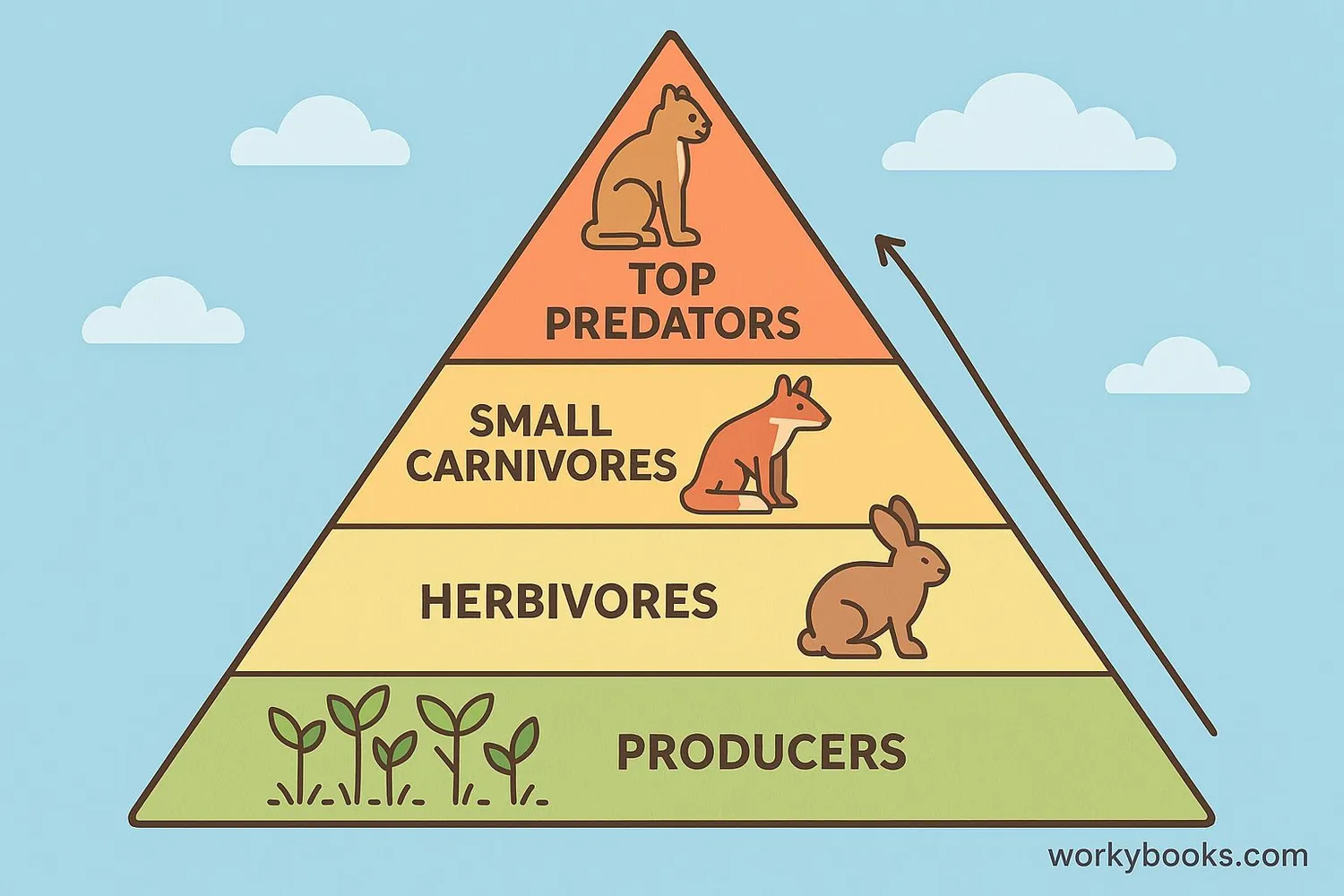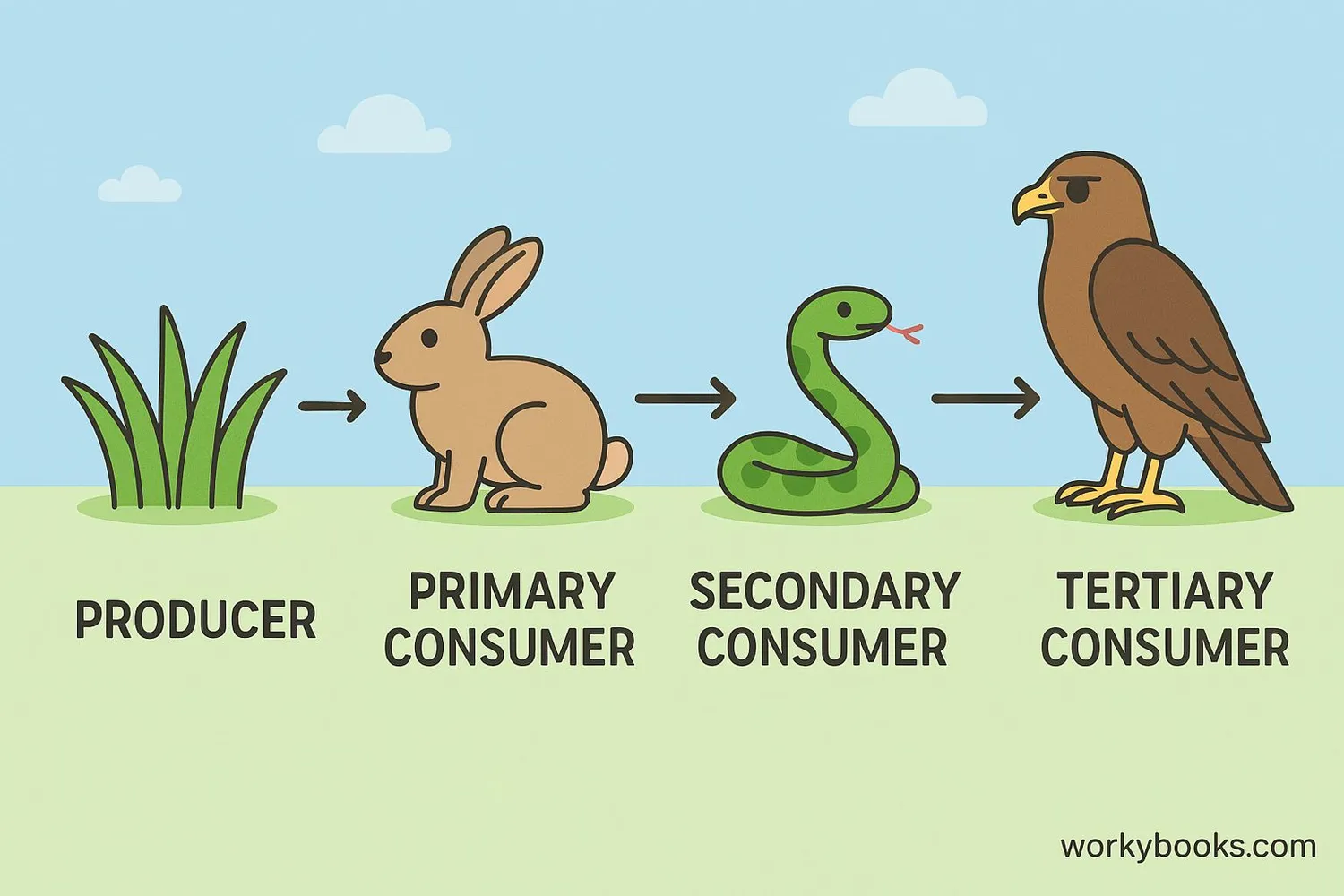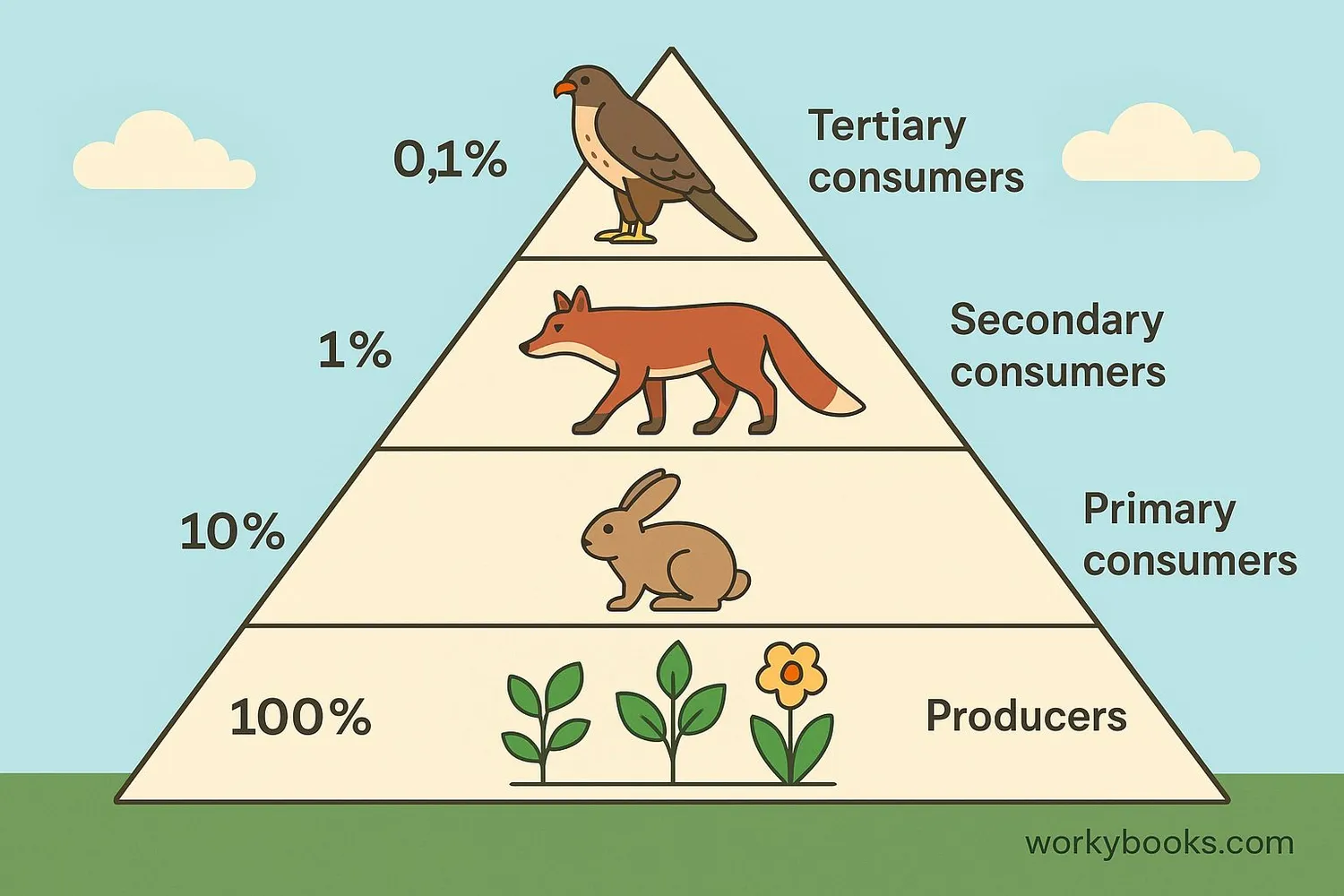Trophic Level - Definition, Examples, Quiz, FAQ, Trivia
Learn how energy flows through ecosystems from producers to top predators
What Are Trophic Levels?

Trophic levels are the different feeding positions in an ecosystem's food chain. Think of them like steps in nature's energy staircase - each level represents a group of organisms that get their food in similar ways.
The word "trophic" comes from the Greek word meaning "nourishment" or "food." In every ecosystem, energy flows from one trophic level to the next, with some energy being lost at each step.
Key Point
Trophic levels show who eats whom in an ecosystem and how energy moves from the sun to plants to animals.
Types of Trophic Levels

There are typically four main trophic levels in most ecosystems:
Producers
Plants and algae that make food from sunlight (photosynthesis)
Primary Consumers
Herbivores that eat plants (grasshoppers, deer, rabbits)
Secondary Consumers
Carnivores that eat herbivores (frogs, small fish, birds)
Tertiary Consumers
Top predators that eat other carnivores (hawks, lions, sharks)
Some ecosystems also have:
• Quaternary Consumers: Apex predators with no natural enemies (killer whales, polar bears)
• Decomposers: Break down dead organisms at all levels (fungi, bacteria)
Energy Transfer Between Levels

Energy flows through trophic levels following the 10% rule:
Only about 10% of the energy from one trophic level gets passed to the next level. The rest is:
• Used for life processes (movement, growth, reproduction)
• Lost as heat
• Not digested (like bones or fur)
Producers
Capture 1% of sun's energy through photosynthesis
Primary Consumers
Get about 10% of the plants' energy
Higher Consumers
Each level gets just 10% of the previous level's energy
Why This Matters
This energy loss explains why there are fewer top predators than plants in any ecosystem - there's simply not enough energy to support many large carnivores.
Trophic Levels Knowledge Check
Test your understanding with these questions about trophic levels.
Questions About Trophic Levels
Here are answers to common questions students have about trophic levels:
Did You Know?
Discover some fascinating facts about trophic levels:
Food Choices Matter
Eating lower on the food chain (more plants) is more energy efficient. It takes about 10 pounds of plants to make 1 pound of beef, but only 2 pounds of plants to make 1 pound of chicken.
Ocean Pyramids
Ocean food pyramids often have more levels than land ones because aquatic producers (phytoplankton) are so tiny and efficient, allowing more energy to reach top predators like sharks.
Human Position
Humans can occupy different trophic levels depending on diet - vegetarians at ~2.0, meat-eaters at ~2.5, and cultures that eat top predators (like whale) can reach 3.0-3.5 on the trophic scale.
Extreme Ecosystems
In deep ocean hydrothermal vent ecosystems, producers are bacteria that use chemicals (not sunlight) for energy, creating unique trophic pyramids completely independent of the sun!





